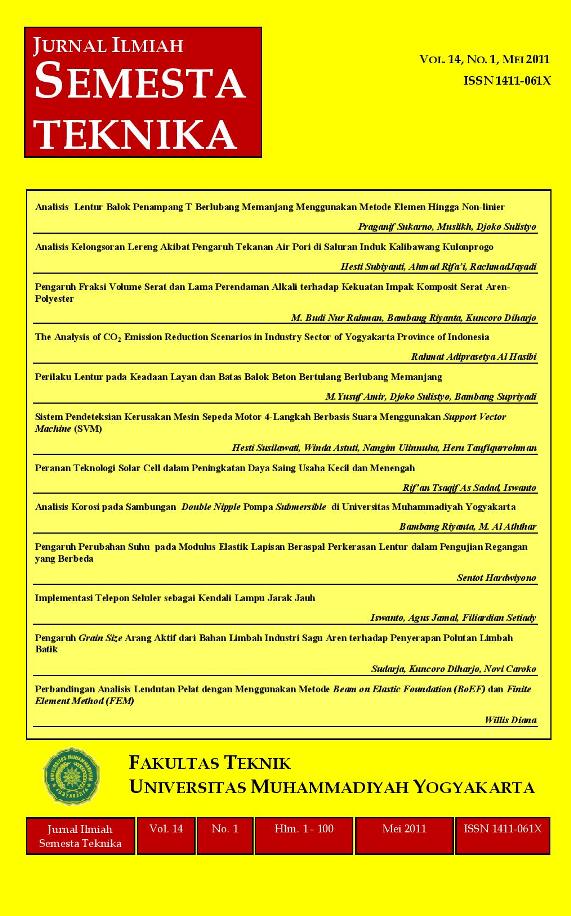Analisis Lentur Balok Penampang T Berlubang Memanjang Menggunakan Metode Elemen Hingga Non-linier
DOI:
https://doi.org/10.18196/st.v14i1.563Abstract
Numerical analysis is a time-, cost- and equipment-effective method to study the behavior of structures. ATENA is one of the available software-based on finite element method. Hollow cross section is one way to reduce the weight of concrete beam. The effect of holes on beam may reduce the bending resistance. The hollow beam was numerically modeled which and subsequently analyzed using the ATENA v.2.10 software. Material parameters being used as input data was obtained from laboratory tests, assuming that steel-concrete bond was prefect, and and the steel reinforcement was modeled as discrete. The results of numerical analysis of the ATENA were then compared with experimental test results on the flexural behavior and serviceability limit state of reinforced concrete hollow beams lengthwise (Amir, 2010), then study the variation of quality parameters of concrete and the hole size variations. The results shows that the collapse load of hollow beam reached only 96.71% and deflection reached 135.96%. Stiffness of hollow concrete beam was also showed a higher stiffness of the experiment. The crack pattern is flexural fracture and very much agree with that of the experiments. Test parameters of concrete quality variations as well as the hole size variation showed higher concrete quality/size of the hole will reduce the ductility of beam.
Downloads
Published
How to Cite
Issue
Section
License
Semesta Teknika is licensed under a Creative Commons Attribution 4.0 International License.
Authors who publish with this journal agree to the following terms:
- Authors retain copyright and grant the journal right of first publication with the work simultaneously licensed under a Creative Commons Attribution License that allows others to share the work with an acknowledgement of the work's authorship and initial publication in this journal.
- Authors are able to enter into separate, additional contractual arrangements for the non-exclusive distribution of the journal's published version of the work (e.g., post it to an institutional repository or publish it in a book), with an acknowledgement of its initial publication in this journal.
- Authors are permitted and encouraged to post their work online (e.g., in institutional repositories or on their website) prior to and during the submission process, as it can lead to productive exchanges, as well as earlier and greater citation of published work (See The Effect of Open Access).









